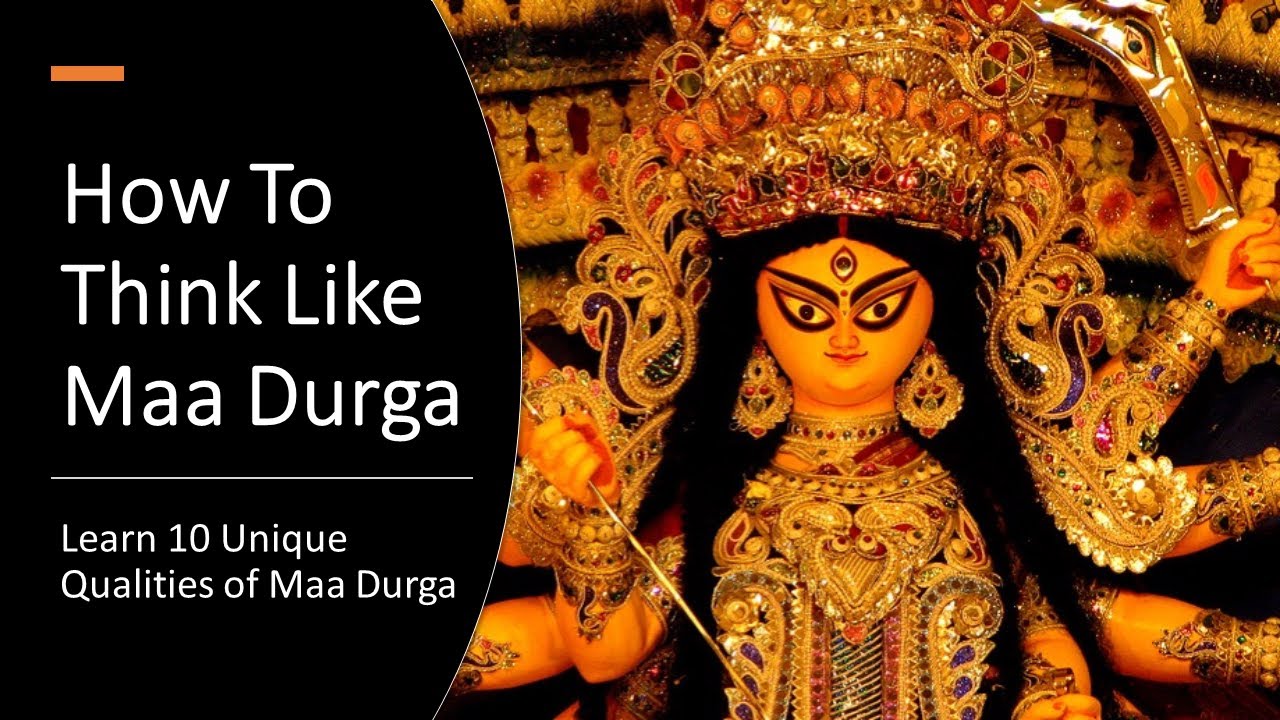Aayi Hai Navratri | Hansraj Raghuwanshi | Navratri Special Bhajan 2025 | Jai Mata Di | Music Video
Summary
TLDRThis vibrant transcript celebrates the joyous occasion of Navratri, a Hindu festival dedicated to the worship of the goddess Durga. The script features exuberant music and lyrics, expressing devotion through dance, song, and prayer. It highlights themes of gratitude, the power of the divine, and community celebration. The verses describe various forms of the goddess, invoking her blessings and protection. The narrative is infused with energy and devotion, inviting everyone to dance, sing, and join in the spiritual festivities of the festival.
Takeaways
- 😀 The script celebrates the arrival of Navratri, a Hindu festival dedicated to Goddess Durga.
- 😀 The song emphasizes the joy and festivities surrounding Navratri, urging everyone to dance, sing, and participate.
- 😀 It highlights the spiritual significance of Navratri, with mentions of the goddess being revered and worshipped.
- 😀 The recurring phrase 'झूमो नाचो रे गाओ सभी' ('Everyone dance, sing, and rejoice') invites collective celebration.
- 😀 The lyrics express gratitude and devotion to Goddess Kali, who is described as compassionate and a savior for the distressed.
- 😀 The song showcases different forms of Goddess Durga, including references to Mahagauri, the giver of spiritual knowledge and prosperity.
- 😀 The festival's atmosphere is filled with color, particularly referencing the traditional 'केसरिया रंग' (saffron color), which symbolizes auspiciousness.
- 😀 The script includes expressions of personal devotion, where the singer refers to themselves as the child of the goddess, seeking her blessings.
- 😀 The script mixes both cultural and religious elements, with references to prayers (आरती) and symbolic representations of the goddess.
- 😀 The script conveys a sense of community, with collective participation in the festival being emphasized throughout the lyrics.
Q & A
What is the central theme of the song in the transcript?
-The central theme of the song is the celebration of Navratri, a Hindu festival dedicated to the worship of the Goddess Durga and her various forms. The song expresses devotion and reverence, while also invoking festive joy and celebration.
Which deities are mentioned in the song?
-The song mentions several deities, including Goddess Kali and Goddess Durga (referred to as 'Ambaji' or 'Jagadambai'). The lyrics also reference the concept of 'Shakti' in the form of the divine mother.
How is the festival of Navratri depicted in the song?
-The festival of Navratri is depicted as a time for joyous celebration, dancing, singing, and worship. The lyrics mention people dancing and singing in honor of the Goddess, embracing the festive spirit with devotion and enthusiasm.
What role does the concept of 'Shakti' play in the song?
-The concept of 'Shakti,' or divine power, is central to the song. The song emphasizes the power of the Goddess to protect, bless, and uplift her devotees. The references to Kali and Durga as manifestations of Shakti highlight the spiritual strength and protection they offer.
What significance do the references to colors and rituals have in the song?
-The references to colors, such as 'Kesariya Rang' (saffron color), symbolize the festive and auspicious nature of the occasion. Colors are traditionally linked to different deities and aspects of the festival. The song also mentions rituals like 'Aarti' and the reverence shown through prayer and offerings.
Why does the song mention 'Aarti' and its importance?
-The mention of 'Aarti' refers to the practice of singing devotional songs in praise of deities. In the song, 'Aarti' is an important ritual to honor the Goddess, and the devotees express their gratitude and devotion through this act.
What is the meaning of 'Naman' in the context of the song?
-'Naman' in the song refers to a respectful bow or salutation to the Goddess. It is a way of showing reverence and surrendering to the divine presence of the deities mentioned in the song.
How do the lyrics express a sense of community during Navratri?
-The lyrics of the song encourage collective participation by inviting everyone to dance, sing, and celebrate together. Phrases like 'Jhoomo Nacho Re Gaao Sabhi' (everyone dance, sing) create a sense of togetherness and shared joy during the festival.
What is the significance of mentioning 'Shatshat Naman' in the song?
-'Shatshat Naman' refers to offering one hundred-fold salutations to the Goddess, symbolizing utmost devotion and respect. This phrase emphasizes the deep reverence with which the devotees approach the divine during Navratri.
How does the song convey the transformative power of the Goddess?
-The song highlights the transformative power of the Goddess, referring to her as the one who can uplift the devotees and remove their suffering. The references to 'Mamata ki Murat' (the embodiment of motherly love) and 'Karunamai' (compassionate) underscore her nurturing and protective nature.
Outlines

This section is available to paid users only. Please upgrade to access this part.
Upgrade NowMindmap

This section is available to paid users only. Please upgrade to access this part.
Upgrade NowKeywords

This section is available to paid users only. Please upgrade to access this part.
Upgrade NowHighlights

This section is available to paid users only. Please upgrade to access this part.
Upgrade NowTranscripts

This section is available to paid users only. Please upgrade to access this part.
Upgrade NowBrowse More Related Video

What is Navratri ? | Why We Celebrate Navratri ? | #navratri #navratri2024

[English] Significance of Navratri | Indian Festival Navratri | What is Navratri ?

Dashain | दशैं | Story of Dashain celebration ep 1 | Vijaya Dashami | Nepali stories

How To Think Like Maa Durga

The Tale of Strength | Ambuja Cement | Durga Puja

5 BEST DURGAMATA PANDALS to VISIT in HYDERABAD | World’s BIGGEST DURGA MATA | Dussehra 2024
5.0 / 5 (0 votes)